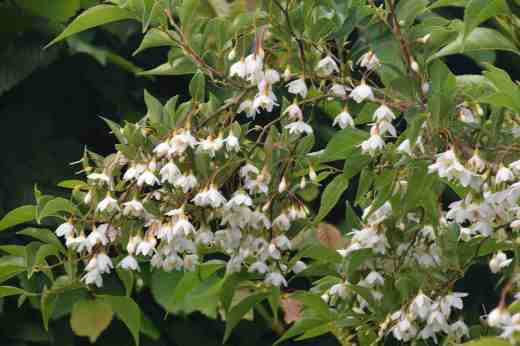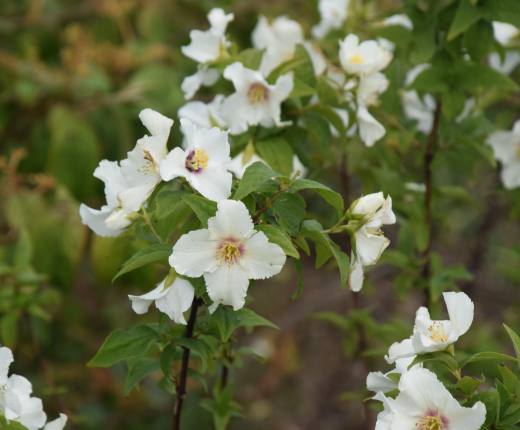Not just a one-night-stand
Thursday was a rotten day with gale-force winds and lots of rain so we went shopping. The intention was to get a ‘Gold Rush’ metasequoia because the original green that I planted has done well and gives a lot of pleasure. But that was not to be. So we came away with several other plants including Parrotiopsis jacquemontiana. I am being a lot more cautious with my horticultural investments at the moment since so many shrubs have died this spring because of waterlogging. Not far from the spot where the parrotiopsis has been planted is a parrotia (which is related) and that is doing OK.

Parrotiopsis (there is only one species) comes from the western Himalayan regions, east of the habitat of parrotia and is something of an oddity and should be easy to grow – perfect! It is in the Hamamelidaceae and is a bit like fothergilla (which is confined in the wild to the eastern USA) but, unusually for the family, the petal-less flowers are surrounded by showy bracts. In this way it is slightly like the ‘flowering dogwoods’ (cornus) although the flowers have also been described as resembling fried eggs.

It blooms most prolifically in spring, as the foliage unfurls, but it continues to bloom sporadically for several months into summer. The growth is twiggy and erratic and interesting and the foliage turns yellow in autumn. It prefers acid soils but is not supposed to be fussy. It has all the qualities I like in a plant, being odd and interesting and I hope it settles in. I have given it a spot in sun, sheltered as best I can, from strong winds, and protected from hot sun on a bank so it won’t have soggy feet.
This post seems to be about white flowers and the second plant is one of the quiet successes in the garden. What was supposed to be a ‘woodland’ bed and initially planted with a (very expensive and ephemeral) davidia ‘Sonoma’ has become home to a Styrax japonica. I was not sure how it would ‘do’ but I love styrax, with their dangling bells of pure white, though I was not sure if I should have chosen the plain white or a less common pink form.

I am still not quite sure if I should have waited to buy ‘Pink Chimes’ but I do not regret planting a styrax and my plant brings me joy. The scented blooms also please the honeybees that are busy visiting the open flowers. My plant is framed by a pair of hosta ‘Empress Wu’ which rather distort the proportions and flanked by a row of hosta ‘Canadian Blue’.

Few small flowering trees can match the elegance of styrax, with masses of pendulous, crisp white blooms festooning the branches.

Elsewhere in the garden philadelphus, also in white, should be in bloom but I lost two in winter because of waterlogging including ‘Starbright’ which I was so pleased with last summer. But ‘Belle Etoile’ is in a slightly raised spot and although young and a bit straggly, is blooming well and scenting the air.

I think philadelphus are a bit overlooked by gardeners and not planted as often as they deserve. I think this is because they are only in bloom for a short time and they are tricky to prune. But there has been a lot of breeding to produce smaller kinds and I think philadelphus deserve another look.
And last week I mentioned my double Geranium phaeum ‘Joseph Green’ and said that I also grew the white form. It is not a novelty and is not rare but I like it far more, even when the wind has made the stems flop over its red berberis neighbour. It is odd that my relationship with ‘Joseph Green’ was nothing more than a one-night-stand and I don’t even go to look at it any more, whereas ‘Alba’ and all these white flowers delight me every time I see them.

Love that styrax! Beautiful AND scented! Could be on my wish list.
I think it should be!
I love Parrotiopsis, an odd one and very interesting. It has done very well here with the summer flowering always better. At present it is 2 metres high X 2.5 wide approx. First saw it in Mount Usher years ago and that plant is now gone.
I am glad that it has done well with you and interesting that it is no longer at Mount Usher. I nipped to Beechdale in the pouring rain and they only had the one plant, rather hidden away and it was a good plant for the money so it was something of an impulse buy buy not what most people would buy on impulse! It has the spot the metasequoia was to have but I can find another spot.